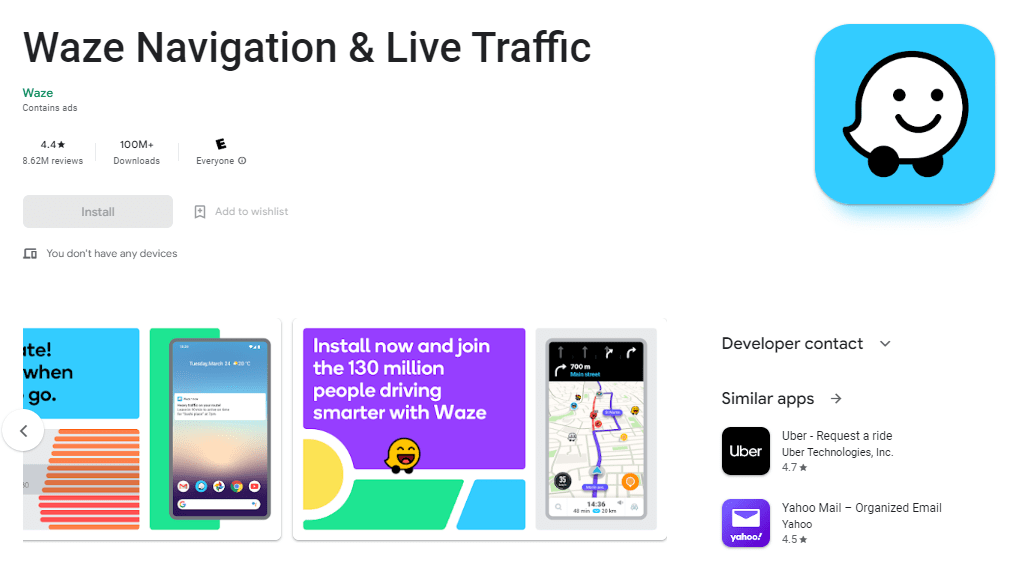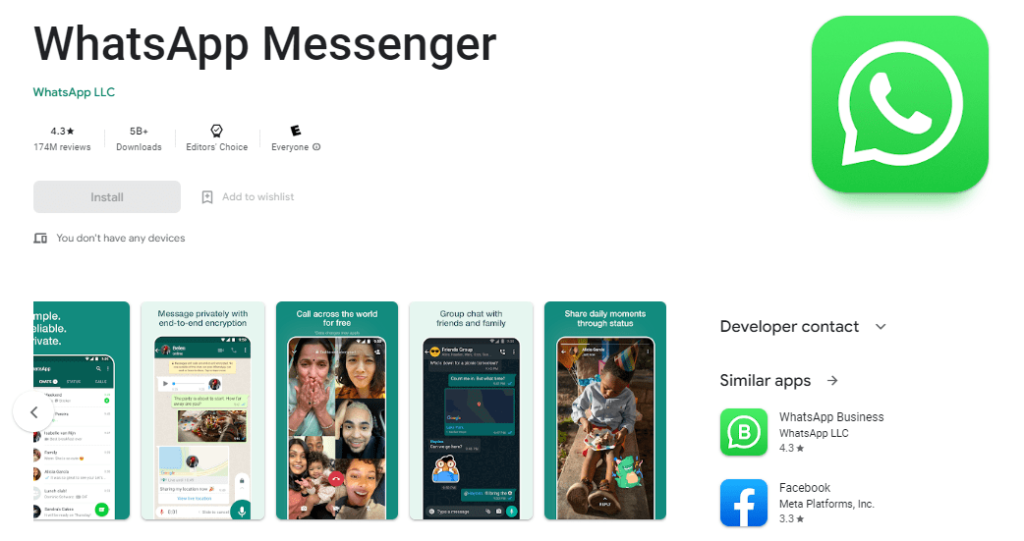Native vs Hybrid App: Which Should You Choose for Enterprise
March 8, 2023
Are you wondering whether or not a native or hybrid app is right for your enterprise? This guide will help you determine which type is best for your business!
Introduction
In today’s digital era, mobile apps are essential to business operations. An enterprise app can help businesses streamline processes, improve customer engagement, and enhance productivity. However, choosing the right type of app for your enterprise can be challenging. Native and hybrid apps are the two most popular options, each with benefits and drawbacks. This blog post will explore the differences between native and hybrid apps and help you choose the best option for your enterprise.
Table of Contents
The Starting Phase of App Development
Upon engaging a mobile app development company, the initial step they undertake is to assess your business thoroughly. They evaluate various aspects, such as the scale of your business, your intended clientele, and the need to develop the app for multiple devices, among other factors.
Moreover, they factor in your present financial status and the timeline to create the app. After analyzing all the gathered data, they offer recommendations to steer your app development in the right direction. This is a crucial stage before actual development since it safeguards companies from overspending and expending unnecessary resources on app development. Now, let’s understand native apps and hybrid apps.
Native App
Native App Definition and Characteristics
Native apps are mobile apps developed for a specific platform using native programming languages and tools. For instance, iOS native apps are written in Objective-C or Swift, while Android native apps are written in Java or Kotlin. Native apps are designed to take advantage of the device’s specific hardware features and functionalities, such as the camera, accelerometer, and GPS. They are also optimized for performance, providing a faster and smoother user experience compared to other types of mobile apps.
Pros of Native App
The benefits of using native apps for enterprise include:
Improved User Experience
Native apps offer the best user experience, as they are optimized for performance, provide fast and responsive interactions, and offer access to device-specific features, such as push notifications, location-based services, and touch gestures.
Enhanced Security
Native apps are more secure than other types of apps, as they can take advantage of the security features of the device and the platform, such as app sandboxing and encryption.
Better Integration with the Platform
Native apps can leverage the full potential of the platform and its SDK, allowing for better integration with the operating system, services, and hardware.
Cons of Native App
However, there are also some drawbacks to using native apps:
High Development Costs
Native app development requires specialized skills and tools, which can increase the development time and cost.
Limited Cross-Platform Compatibility
Native apps are built for a specific platform, which means that developing a native app for multiple platforms requires creating separate apps for each platform.
Examples of Native Apps
Waze:

Waze is a GPS navigation app that has garnered positive reviews from drivers. This exemplary native app operates seamlessly on smartphones and tablets with GPS technology. It notably aids users in navigation by providing step-by-step directions, route details, and user-generated travel times. One notable perk of Waze is that it is entirely free to download and use.
Tesla:

With Tesla’s innovative app, you can effortlessly manage and monitor your vehicle from the palm of your hand, wherever you are. Whether you’re eager to rev up your engine or simply curious about the status of your car, this app has got you covered.
WhatsApp:

Well, this app needs no introduction! With over 500 cr+ downloads, WhatsApp is the perfect solution for keeping in touch with friends, family, and colleagues from all over the globe.
Hybrid App
Definition and Characteristics of Hybrid App
Hybrid apps are a type of mobile app that combines elements of both native and web apps. They are built using a single codebase that can be deployed across multiple platforms, such as iOS, Android, and Windows. Hybrid apps typically use various technologies, including HTML, CSS, JavaScript, and native APIs, to provide users with a seamless and engaging experience.
One of the key characteristics of hybrid apps is their ability to access native device features, such as the camera, contacts, and GPS, while also being able to function offline. This makes hybrid apps a popular choice for businesses looking to develop cross-platform apps quickly and cost-effectively without sacrificing performance or user experience.
Pros of Hybrid App
Like any technology, hybrid apps have their own set of advantages and disadvantages. Some of the pros of hybrid apps include the following:
Reduced Development Time
Eliminating the need to create two separate apps cuts development time in half. If you have an idea ready for the market, cross-platform frameworks are the fastest way to bring your product to life and get it onto Google Play and Apple App Stores. This approach allows the app to be in the hands of every user faster than if you had to code and deploy two separate apps.
Cost Savings
Less development time means fewer billable hours, making hybrid apps cheaper than developing native apps as long as they take fewer hours to create. Flutter, a popular hybrid app development framework, can significantly reduce development time by allowing developers to write one codebase that works across multiple platforms. This not only saves time but also reduces the cost of hiring separate developers for different platforms.
Broader Audience
Budget constraints sometimes lead to app rollouts on one platform before launching on another. This limits the app’s reach as users cannot download it while they wait for it to become available on their phone’s operating system. With hybrid apps, once the app is ready, it can be listed on Android and iOS app stores, making it available to a wider audience.
Easier Maintenance and Bug Fixes
Hybrid apps allow one patch and bug fix to be sent out, resolving issues across all devices. This is easier than solving the problem for iOS first and then solving the same problem a second time for Android.
Scalability
Hybrid apps can scale more quickly since it’s easier to integrate new features. When Waze launched a feature allowing drivers to view the app on their dashboard, it was integrated with Android Auto in August 2018; Apple CarPlay support for the same feature was only offered over a month later to iOS users, which caused frustration. Hybrid apps avoid this issue.
Cons of Hybrid App
However, there are also some cons to consider, such as:
Running at Snail’s Pace
Native apps are usually considered faster since they are designed using Apple or Google’s programming languages, providing direct access to a phone’s built-in features such as GPS and audio. Although hybrid app programming has improved significantly and no longer lags, some hybrid apps, particularly niche ones, may perform slower than native apps in certain situations.
Testing Ground
Hybrid apps must meet the approval criteria of multiple platforms, not just one. This means the testing process will take longer to iron out coding glitches for all platforms, ensuring the app is as close to perfection as possible. Moreover, developers must follow the Apple and Android app store guidelines, which can be more restrictive when adhering to both.
Catching up with Updates
Whenever Google or Apple releases new software, they provide “Software Development Kits” to instruct developers on updating apps written in their respective languages. This is why it’s important to hire experienced remote developers who can quickly adapt to changes and ensure compatibility, especially with native apps. Hybrid apps, written in a third-party language, can take even longer to update and may result in compatibility issues.
Less Favored to Complexity
If you have a complex app that necessitates high performance or relies heavily on 3D graphics and design, hybrid apps may not be the best choice since they are not as competitive as native apps in this field.
Examples of Hybrid App
BMW App:

BMW’s mobile development team found creating the iOS version of their vehicle companion app easier. Unfortunately, the Android version lagged in features, and BMW had to catch up to make both app versions similar. They turned to Flutter, Google’s cross-platform framework, to streamline their efforts. By focusing on one app, the development team could implement the same features for all users much faster than if they had to retool both apps separately.
Twitter:

Social media giant Twitter is a major reason many businesses have switched to hybrid apps. The platform has nearly 200 million active users every day. The app suffered from performance issues in the past, but after switching to a hybrid app, the team could quickly push through bug fixes, and many were resolved.
NerdWallet:

When the team behind NerdWallet wanted to shed their “website-first” image, they needed a market-ready app, and they needed it fast. After encountering difficulties exploring native codebases, the developers used a cross-platform framework to reduce friction and speed up development.
Comparison between Native Apps and Hybrid Apps
User Experience
Native apps can take full advantage of the native hardware and software features of a device, resulting in a more seamless and intuitive experience. However, hybrid apps have come a long way and can provide a comparable user experience, especially for simpler apps.
Performance
It is easier and more intuitive to use native apps because they can utilize the native hardware and software features of a device. Nevertheless, hybrid apps have made great strides in recent years and can provide a comparable user experience, especially for simpler apps.
Development Time and Cost
When it comes to development time and cost, hybrid apps are the winner because a single codebase across multiple platforms results in reduced development time and cost. Native apps require separate development for each platform, which leads to higher development costs and longer development times.
Maintenance and Updates
Hybrid apps have the advantage of updating all platforms with one patch or bug fix, making it easier and more efficient to maintain and update the app. Native apps, on the other hand, require separate updates for each platform, resulting in longer update times and potentially more maintenance issues.
App security
Native apps have an advantage in terms of security because they are built specifically for a single operating system, which means that they can take full advantage of the security features provided by the platform. They also have access to the latest security updates and patches the platform releases, which helps reduce the risk of security breaches.
On the other hand, hybrid apps may have some security risks due to the use of third-party libraries and plugins. These plugins may not be updated regularly, which can lead to vulnerabilities in the app. Moreover, since hybrid apps are built using web technologies, they can be more vulnerable to attacks like cross-site scripting (XSS) and SQL injection attacks.
Conclusion
Choosing between a native or hybrid approach to app development requires careful consideration of every aspect of app development. Both approaches have advantages and disadvantages, and the choice ultimately depends on the specific needs and goals of the project. A thorough evaluation of each option’s pros and cons and consideration of your enterprise’s needs can help you make an informed decision. The examples provided in this blog post can serve as a starting point for evaluating the options. Contact us and make the right choice for your enterprise.

Recent Post
Recommended Blogs
Let’s Discuss your Ideas.
Contact usJoin our Team
Go to CareerOur Offices
INDIA
B 401-402, Shilp Corporate Park, Rajpath Rangoli Rd, Thaltej, Ahmedabad, Gujarat 380054
CANADA
1932 50 Ave SW,Calgary, AB T2T 2W2, Canada
Hire a Team
NextJS DeveloperVueJS DeveloperAngularJS DeveloperReactJS DeveloperNodeJS DeveloperKotlin DeveloperPython DeveloperMEAN Stack DeveloperRuby on Rails DeveloperFlutter Developer© 2026 ultroNeous. All Rights Reserved.